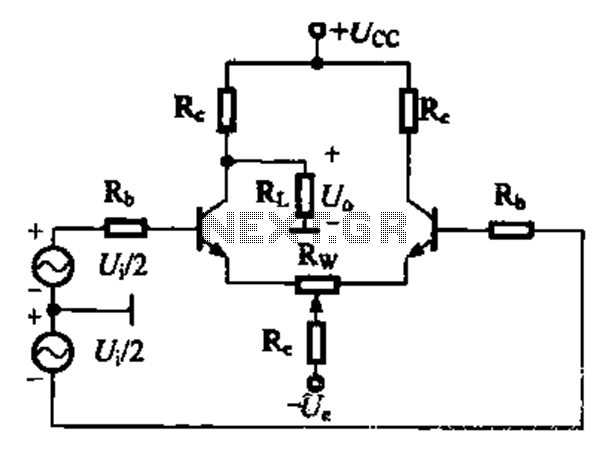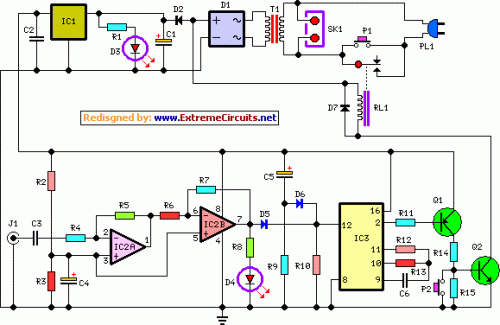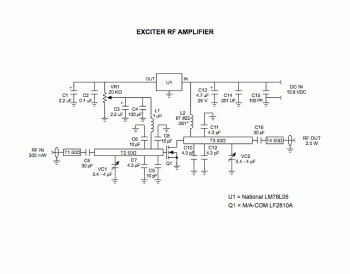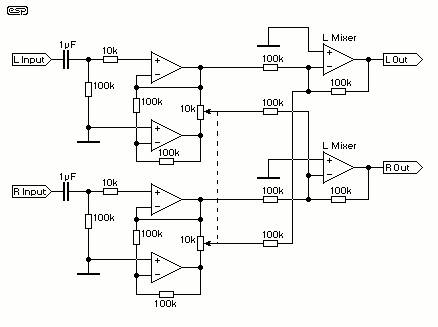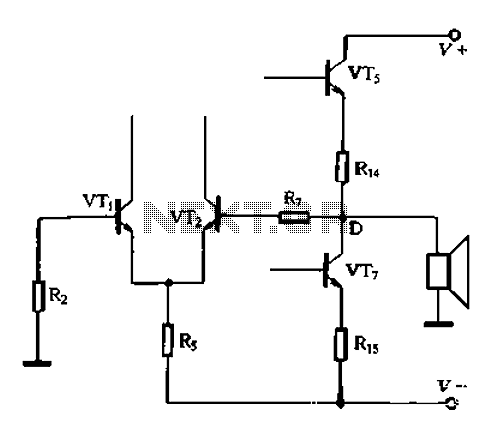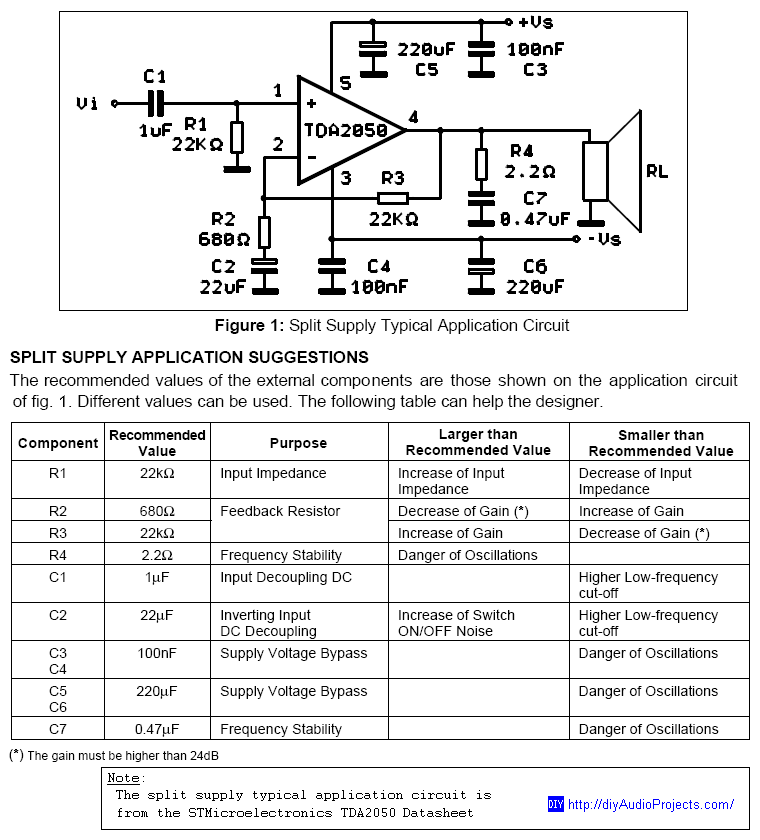
Poddwatt: Class-A Stereo Push-Pull EL84 (6BQ5) Vacuum Tube Amplifier
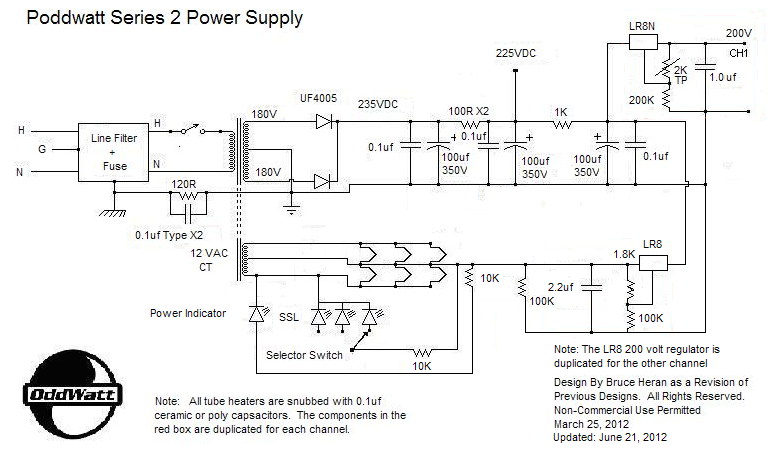
This project is related to previous tube amplifier designs, particularly the first Push-Pull EL84 (6BQ5) Oddwatt project from nearly two years ago. Both projects utilize EL84 / 6BQ5 tubes; however, while the earlier version employed an ECC802S driver, this new iteration uses 5751 driver tubes. Although the basic circuits share similarities, the new project features several differences, primarily making it easier and more cost-effective to construct. The large output transformers from the original design have been substituted with lighter and less expensive alternatives, resulting in a savings of approximately $40 to $50. Additionally, multiple circuit refinements have been implemented. Notably, the new amplifier has a higher gain, facilitating direct connections to MP3 players via a headphone jack—something the previous design with the ECC802S driver did not support due to insufficient gain. The outcome is a rewarding DIY project for those seeking 5 to 7 watts of high-quality sound. The amplifier performs cleanly from 25 Hz to over 20 kHz, as indicated by measurements in the referenced tables. While it delivers ample bass response, it does not match the output of larger amplifiers like the KT88 Odd Blocks, which utilize much larger audio output transformers. The sound quality is exceptional, provided the power limits are adhered to, offering clarity and detail. Caution is advised, as this project involves high voltages that can be hazardous. Individuals unfamiliar with high voltage equipment should refrain from attempting this project. The amplifier features a single power supply with four filter sections; the first three are shared between both channels, while the final section is divided to ensure minimal interaction between channels. Fast recovery solid-state rectifiers and a capacitive input are used in the first three sections, with three bypassed by polypropylene capacitors, resulting in an extremely quiet amplifier. The driver stage employs a straightforward SRPP design utilizing both sections of a new production Sovtek 5751 vacuum tube, which is similar to a 12AX7 but with lower gain. Testing revealed that the Sovtek 5751 exhibited lower distortion compared to other brands. The SRPP bias point is set to approximately 1.25 mA to ensure linear response, and this configuration is particularly effective for driving power tubes. The gain of the 5751 SRPP driver stage is approximately 32 times, or 30 dB. The output stage features a self-inverting push-pull (SIPP) design based on the Compact Hi-Fi Power Amplifier by Melvin Leibowitz, which has been in use for about 50 years. The design's challenge has historically been maintaining linear operation, as it functions only in class-A mode with both tubes continuously conducting. This circuit's appeal lies in its elimination of the phase splitter stage, requiring only a single-ended driver. The integration of solid-state electronics has provided a solution to this issue.
The amplifier's design emphasizes simplicity and efficiency, making it accessible for DIY enthusiasts. It is recommended to follow safety protocols due to the presence of high voltages, ensuring that users prioritize their safety while enjoying the benefits of high-quality audio reproduction. The incorporation of the Sovtek 5751 vacuum tube in the SRPP configuration not only enhances linearity and gain but also contributes to the overall performance of the amplifier, making it a suitable choice for various audio applications. The innovative use of a single power supply with multiple filter sections minimizes noise and hum, significantly improving the listening experience. This design approach, coupled with the careful selection of components, results in an amplifier capable of delivering impressive sound quality in a compact and cost-effective package.This project is related to the other tube amplifier projects I have posted. It has more than a casual similarity to the first Push-Pull EL84 (6BQ5) Oddwatt project from nearly two years ago. Both tube amplifier projects use EL84 / 6BQ5 tubes and the earlier one used a ECC802S driver while this one uses 5751 driver tubes.
The basic circuits are rat her similar, but the new project has a number of differences. Most notably it is easier and less costly to build. The rather large output transformers used in the original project have been replaced by ones that are considerably less weighty and less costly. This alone makes for a $40 to $50 savings. A number of circuit refinements have been included as well. One area of particular note is the higher gain of this new tube amp. This was done to allow the direct connection (via headphone jack) of MP3 players to the tube amp. The earlier project with the ECC802S driver tube did not have sufficient gain for this. The end result is a great DIY project for those of you who need 5 to 7 watts of high quality sound. The amplifier is quite clean from 25 Hz to past 20kHz (see the measurements in Tables 1 and 2 below).
There is plenty of bottom end, just not as much as the bigger amplifiers like the KT88 Odd Blocks which use much larger audio output transformers. I was very surprised how well this amplifier sounds. If you don`t exceed the power limits it will provide sound quality that is easy to listen to with great detail and clarity.
Warning: This project uses high voltages. Contact with such voltages can cause injury or death. If you are not familiar with high voltages and how to safely build high voltage equipment, then please do not attempt this project. I want everyone to enjoy music and not have anyone harmed in the process. The amplifier uses a single power supply with four filter sections. The first three sections are in common with both channels. The final filter section is split into two halves so that each SRPP has its own filter. I do this so that there are minimal interactions between the two channels. The four sections start with fast recovery solid state rectifiers and a capacitive input. Three of the four sections are bypassed with polypropylene caps. The end result of this arrangement is an amplifier that is extremely quiet. I hate hum and noise and take special care to minimize them. I want to hear music, not buzz. The driver stage is a fairly straight forward SRPP design using both sections of a new production Sovtek 5751 vacuum tube.
For those who are not familiar with this tube, it is similar to a 12AX7. The 5751 is pin compatible with the 12AX7 but not directly interchangeable as some parameters are different (5751 gain is about 30% lower than the 12AX7). I tried other brands of 5751 vacuum tubes and the Sovtek brand had lower distortion than the others. The 5751 JAN Philips tubes used in the larger amps did not perform as well in these amps. The bias point for the SRPP is approximately 1. 25 mA. This is sufficient to ensure linear response. SRPP drivers are particularly good as power tube drivers. I chose one here for simplicity, gain, linearity, drive capability, and power supply noise rejection.
The gain of the 5751 SRPP driver stage is about 32 times or 30dB. The output stage is a self-inverting push pull (SIPP) design after the Compact Hi-Fi Power Amplifier by Melvin Leibowitz. The basic design has been around for a long time (50 years or so). The problem with early applications was that it was difficult to force it to operate in a linear manner.
It can only function in a class-A mode with both tubes always conducting. The reason this circuit is attractive is that it eliminates the need for a phase splitter stage. It requires only a single-ended driver. The advent of solid state electronics provided a solution to the problem. A simple application of a common LM317 IC voltage regulator converts it to a ver 🔗 External reference
The amplifier's design emphasizes simplicity and efficiency, making it accessible for DIY enthusiasts. It is recommended to follow safety protocols due to the presence of high voltages, ensuring that users prioritize their safety while enjoying the benefits of high-quality audio reproduction. The incorporation of the Sovtek 5751 vacuum tube in the SRPP configuration not only enhances linearity and gain but also contributes to the overall performance of the amplifier, making it a suitable choice for various audio applications. The innovative use of a single power supply with multiple filter sections minimizes noise and hum, significantly improving the listening experience. This design approach, coupled with the careful selection of components, results in an amplifier capable of delivering impressive sound quality in a compact and cost-effective package.This project is related to the other tube amplifier projects I have posted. It has more than a casual similarity to the first Push-Pull EL84 (6BQ5) Oddwatt project from nearly two years ago. Both tube amplifier projects use EL84 / 6BQ5 tubes and the earlier one used a ECC802S driver while this one uses 5751 driver tubes.
The basic circuits are rat her similar, but the new project has a number of differences. Most notably it is easier and less costly to build. The rather large output transformers used in the original project have been replaced by ones that are considerably less weighty and less costly. This alone makes for a $40 to $50 savings. A number of circuit refinements have been included as well. One area of particular note is the higher gain of this new tube amp. This was done to allow the direct connection (via headphone jack) of MP3 players to the tube amp. The earlier project with the ECC802S driver tube did not have sufficient gain for this. The end result is a great DIY project for those of you who need 5 to 7 watts of high quality sound. The amplifier is quite clean from 25 Hz to past 20kHz (see the measurements in Tables 1 and 2 below).
There is plenty of bottom end, just not as much as the bigger amplifiers like the KT88 Odd Blocks which use much larger audio output transformers. I was very surprised how well this amplifier sounds. If you don`t exceed the power limits it will provide sound quality that is easy to listen to with great detail and clarity.
Warning: This project uses high voltages. Contact with such voltages can cause injury or death. If you are not familiar with high voltages and how to safely build high voltage equipment, then please do not attempt this project. I want everyone to enjoy music and not have anyone harmed in the process. The amplifier uses a single power supply with four filter sections. The first three sections are in common with both channels. The final filter section is split into two halves so that each SRPP has its own filter. I do this so that there are minimal interactions between the two channels. The four sections start with fast recovery solid state rectifiers and a capacitive input. Three of the four sections are bypassed with polypropylene caps. The end result of this arrangement is an amplifier that is extremely quiet. I hate hum and noise and take special care to minimize them. I want to hear music, not buzz. The driver stage is a fairly straight forward SRPP design using both sections of a new production Sovtek 5751 vacuum tube.
For those who are not familiar with this tube, it is similar to a 12AX7. The 5751 is pin compatible with the 12AX7 but not directly interchangeable as some parameters are different (5751 gain is about 30% lower than the 12AX7). I tried other brands of 5751 vacuum tubes and the Sovtek brand had lower distortion than the others. The 5751 JAN Philips tubes used in the larger amps did not perform as well in these amps. The bias point for the SRPP is approximately 1. 25 mA. This is sufficient to ensure linear response. SRPP drivers are particularly good as power tube drivers. I chose one here for simplicity, gain, linearity, drive capability, and power supply noise rejection.
The gain of the 5751 SRPP driver stage is about 32 times or 30dB. The output stage is a self-inverting push pull (SIPP) design after the Compact Hi-Fi Power Amplifier by Melvin Leibowitz. The basic design has been around for a long time (50 years or so). The problem with early applications was that it was difficult to force it to operate in a linear manner.
It can only function in a class-A mode with both tubes always conducting. The reason this circuit is attractive is that it eliminates the need for a phase splitter stage. It requires only a single-ended driver. The advent of solid state electronics provided a solution to the problem. A simple application of a common LM317 IC voltage regulator converts it to a ver 🔗 External reference
Warning: include(partials/cookie-banner.php): Failed to open stream: Permission denied in /var/www/html/nextgr/view-circuit.php on line 713
Warning: include(): Failed opening 'partials/cookie-banner.php' for inclusion (include_path='.:/usr/share/php') in /var/www/html/nextgr/view-circuit.php on line 713
